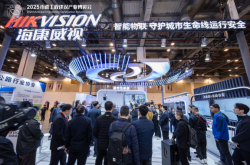Is Xiaomi's High-End Push Again in Jeopardy?
![]() 05/20 2025
05/20 2025
![]() 708
708
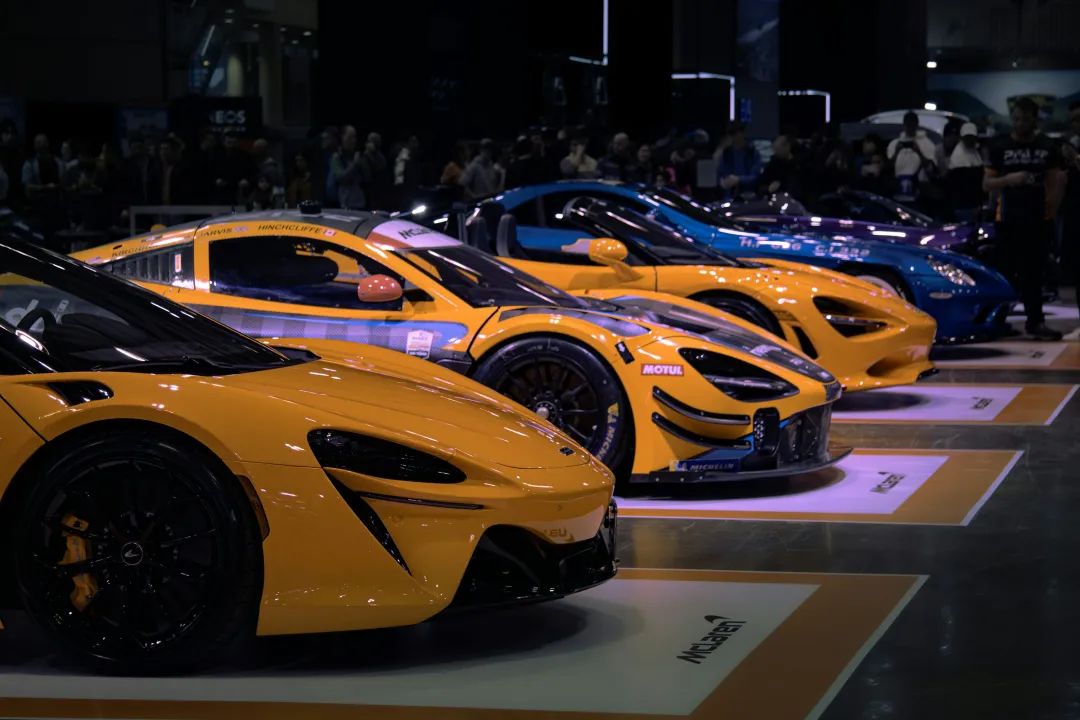
The perception that "Xiaomi equals cost-effectiveness" has proven a stubborn ceiling to breach. The string of controversies surrounding the SU7 has only reinforced this perception with additional layers of concrete.
If you were in the automotive industry in 2025, Xiaomi's SU7 would have dominated headlines in the first half of the year. Unfortunately, it wasn't a story of a successful debut but rather an arduous journey into the high-end market, played out in the harshest of modes.
Lei Jun's all-in finale, with its high-end aura barely having time to warm up, was quickly doused by the optional carbon fiber front hood priced at 42,000 RMB, leaving the first batch of car owners feeling let down.
This "high-end material" hyped by Xiaomi was thoroughly exposed by real-world testing, becoming a mere "showpiece." The joke, "You're selling me two holes for 42,000 RMB? Are you kidding me?" swiftly spread among car owners, igniting a "cancellation Waterloo" for Xiaomi SU7's high-end debut.
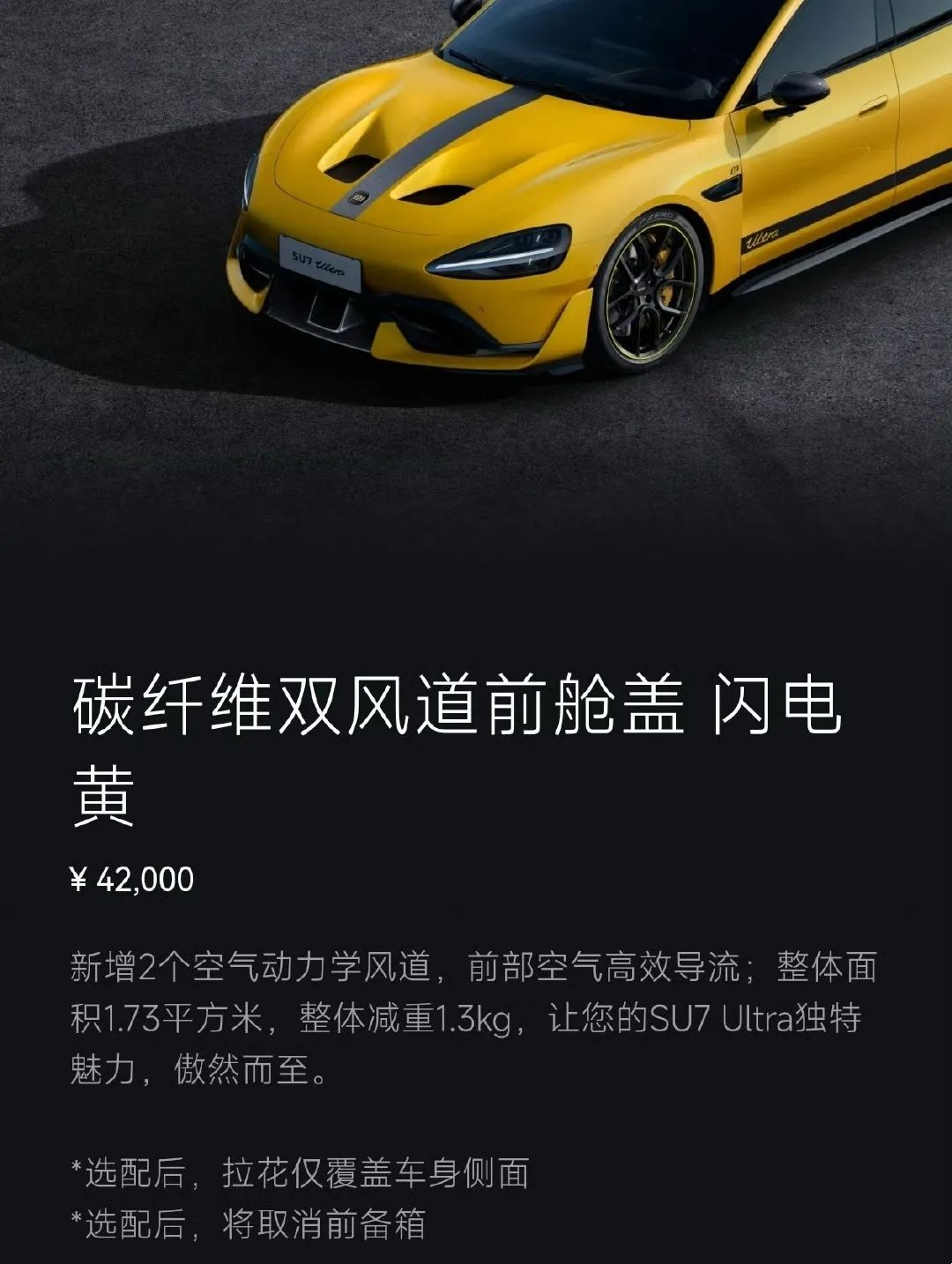
Since the beginning of the year, the Xiaomi SU7 series has been akin to opening Pandora's box—power system "castration" post OTA updates, fatal accidents raising smart driving safety concerns that are "frightening even to ghosts," and even reports of "brake failure" while reversing. Each incident has precisely hit the raw nerve of consumer safety and trust.
Rights protection groups quickly ballooned, with over 300 "Mi Fans" turning into "Mi Angry." Their demand for "a refund and triple compensation" translates to a theoretical compensation per car owner related to the carbon fiber front hood reaching 168,000 RMB.
Faced with surging public opinion, Xiaomi's official apology in the wee hours of May 7, 2025, coupled with its excuse of "unclear information expression" and "compensating with 20,000 points (approximately 2,000 RMB) to calm you down," seemed not only feeble but also like "pouring oil on the fire" for users.
The fuse ignited by the controversy over high-end components swiftly evolved into a storm of "cancellation gates" sweeping through Xiaomi Auto.
This isn't merely a "quality accident" but rather another habitual "stumble" for Xiaomi on its path to high-end development. A "high-end curse" that Xiaomi hasn't been able to fully overcome in its mobile phone business has now intensified in the automotive sector, which involves even greater investments, higher risks, and more severe consequences for any missteps.
1
Does Xiaomi always "fall short" at the top?
To suggest that Xiaomi doesn't aspire to go high-end would be a misunderstanding of Lei Jun. From mobile phones to cars, Xiaomi's "aspiration for high-end" has never wavered. But why does every vigorous charge often end up with more thunder than rain, or even a "stumble" if you're not careful? This has to do with Xiaomi's "genes" and the "complications" of its maladjustment when attacking the high-end market.
As everyone knows, Xiaomi emerged victorious from the brutal mobile phone market with its killer feature of "extreme cost-effectiveness." This is both its secret to success and the heaviest "historical burden" when it comes to attacking the high-end market.
For a brand that constantly preaches, "Let's be friends, hardware doesn't make money," suddenly wanting to sell at high prices will naturally make consumers wonder, "Why?" This brand perception inertia makes Xiaomi's high-end path exceptionally difficult.
In 2024, in the high-end mobile phone market above 600 USD globally, Apple accounted for 66%, Samsung for 18%, and Huawei for 7%, while Xiaomi only accounted for 2%. Behind these 2% are huge marketing investments and less than optimistic profit returns.
What high-end users pursue, besides the product itself, is also the psychological satisfaction brought by the brand, and Xiaomi's "cost-effectiveness" label just dilutes this satisfaction. Although the ASP (Average Selling Price) of Xiaomi mobile phones is increasing, reaching 1,138.2 RMB in 2024, it is still "dwarfed" by Apple's ASP, which often exceeds ten thousand RMB.
The average wholesale price of global smartphones in Q1 2025 was only about 2,400 RMB, indicating that if Xiaomi wants to raise its overall ASP with a few high-end models, it might have to rely on Leica co-branded models sold in limited quantities akin to "family heirlooms."
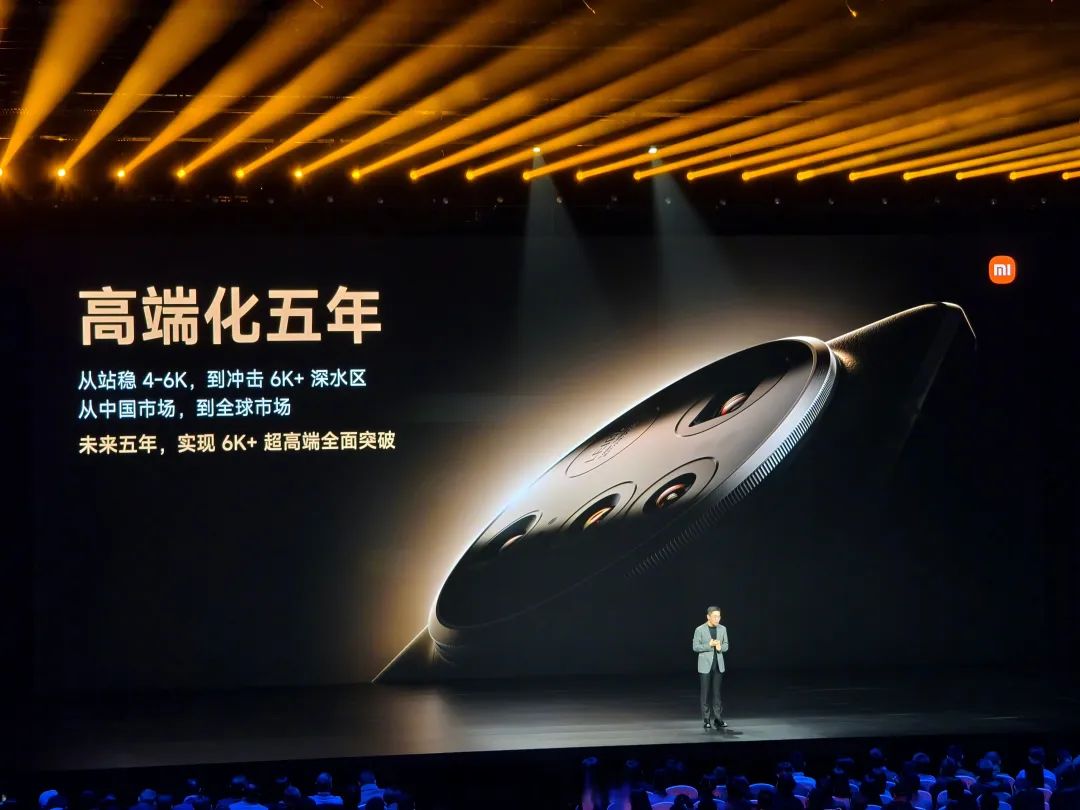
Xiaomi's favorite tactic when attacking the high-end market is "packing in features"—the spec sheet must look impressive.
This approach, which worked wonders in the "cost-effectiveness" era, often "fails" in the high-end market. High-end users value a stable and smooth experience, innovative solutions to pain points, and seamless ecosystem services more than just a parameter race. Xiaomi mobile phones have often been criticized for having "top-notch parameters but lacking in optimization."
This time around, with the SU7's carbon fiber front hood, a lot of effort was put into marketing, but third-party teardowns revealed that the internal structure did not match the advertised functions, being almost identical to an ordinary aluminum hood with only a 1.3 kg weight reduction, once again confirming the old problem of "impressive parameters but skeletal experience." This inevitably raises questions—isn't this just the old problem of "inflated parameters" on mobile phones being transplanted unchanged to cars?
The deeper reason lies in the accumulation of core technologies.
Huawei was able to establish a firm foothold in the high-end market with its Kirin chips and HarmonyOS. Although Xiaomi is also striving for independent research and development, with the Surge S series of chips briefly making an appearance, there's still a long way to go before it can form a true core technology barrier and play a differentiated ace in the high-end market that says "we have it when others don't."
In the automotive business, for key technologies such as the three-electric system and intelligent driving, Xiaomi currently mainly demonstrates its supply chain integration capabilities. It still lacks the confidence to tell a truly hardcore high-end story of its own.
Furthermore, Xiaomi's consistent "Internet thinking" and "fast and furious" model inevitably clash with the industrial law of "slow and meticulous work" in car manufacturing.
Xiaomi's marketing prowess is indeed formidable. Lei Jun personally led the SU7 launch event, raising market expectations to their peak. However, after the "heavy marketing," the hidden worry of the product's "light landing" also erupted. From the "mismatch" of the front hood to the "backstabbing feeling" caused by OTA "horsepower locking," to smart driving safety questions raised by fatal accidents and quality control alerts like "brake failure," they all seem to follow the logic of Internet products that "paint a big pie first and then iterate."
But cars are different from mobile phones; they carry the safety of life. Any negligence in safety and quality could have catastrophic consequences. Xiaomi has bet 10 billion USD over the next 10 years and an initial 10 billion RMB on its automotive business. If this "Internet-style" aggression is not adjusted, the risk of a stumble is extremely high.
At the same time, Xiaomi's extreme cost control and operational efficiency, a business model that was unstoppable in the "cost-effectiveness" era, also face a "soul-searching" when pursuing high-end quality.
High-end products require high-cost investments in "invisible" details to ensure high quality and user experience. If, in order to stick to the profit model or seize the listing window period, there are "savings" in these key areas, the so-called high-end becomes a castle in the air.
As media analysis points out, there may be a several-fold gap between the 42,000 RMB optional price of the carbon fiber front hood of the SU7, which has caused great controversy, and its actual cost. This undoubtedly casts a shadow over Xiaomi's "high-end" image.
2
The billion-dollar bet is in jeopardy
The trust crisis currently faced by Xiaomi Auto has a direct impact, causing Xiaomi's brand's high-end dream to stumble at the final hurdle. The perception that "Xiaomi equals cost-effectiveness" has proven a stubborn ceiling to breach. The string of controversies surrounding the SU7 has only reinforced this perception with additional layers of concrete.
Real losses are also accumulating rapidly. For the "front hood" alone, the theoretical total compensation could exceed 50 million RMB, not including the high costs required to address issues like "horsepower locking" and investigating "brake failure."
More worryingly, after the initial lock-in of over 10,000 orders for the SU7 Ultra announced after the launch event, how many users are willing to continue "charging for their beliefs" after this series of controversies is a huge question mark. The massive loss of these orders will directly impact Xiaomi Auto's revenue and cash flow performance in the second quarter of 2025 and beyond.
The capital market's reaction to this will also be inevitably sensitive and brutal.
After the major safety incident in March, panic spread rapidly in the capital market. Xiaomi's share price plummeted by 21.7% from its all-time high of 59.45 HKD, erasing over 300 billion HKD in market value.
And that's not all. The deeper "internal injury" caused by Xiaomi SU7's crisis is that it directly stabs at the strategic heart of Lei Jun's "full ecosystem of people, cars, and homes." It was originally hoped that the car, as a super terminal, would fully activate related businesses such as mobile phones and smart homes. If this key link of "cars" encounters such a significant crisis of trust and quality at an early stage, the synergistic effect of the entire ecosystem "family bucket" will be greatly reduced.
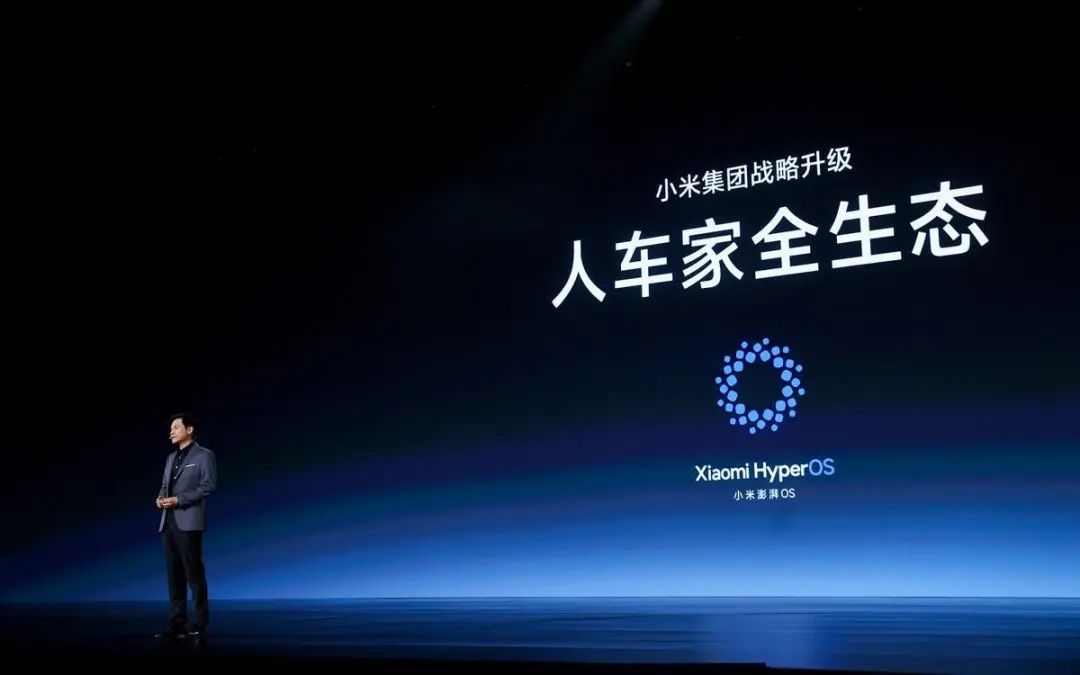
So, the question arises: does Xiaomi Auto, deeply trapped in the "high-end curse" and being grilled by users and the market, still have a chance to be "rescued?" The answer may be yes, but the window of opportunity is extremely short.
The key to breaking the deadlock lies in whether Lei Jun can lead Xiaomi Auto to make a thorough transformation from "marketing-driven" to "value-driven" and reshape the core of its high-end strategy.
Frankly and responsibly facing reality is the primary issue that needs to be addressed urgently. Providing solutions that exceed expectations for affected users and making the utmost effort to repair the severely damaged trust are crucial. In the short term, this means a significant increase in financial expenditure but is vital for rebuilding brand reputation.
Regarding the exposed technical and safety concerns, transparent and thorough investigations should be conducted, and the results and improvement measures should be disclosed to the public. This may require Xiaomi to increase its investment in independent research and development of core technologies in its automotive business, slow down its initial pursuit of speed and scale, and truly focus on making up for the shortcomings in automobile manufacturing.
Finally, there's the reshaping of communication methods, shifting from the past emphasis on marketing momentum to a greater focus on fact presentation, risk disclosure, and two-way interaction. In the long run, if the "cost-effectiveness" stigma of the main "Xiaomi" brand is indeed difficult to overcome for its high-end automotive business, then after overcoming the current crisis, carefully evaluating and timely launching a more purely positioned high-end sub-brand may be a strategic option worth considering. However, this requires longer-term planning and more sustained investment.
This storm in the early spring of 2025 is an extremely severe "stress test" for Xiaomi Auto. Whether the billion-dollar bet on car manufacturing will ultimately bear fruit largely depends on whether Xiaomi can deeply learn from this crisis and complete a fundamental shift from Internet thinking to automotive industry thinking. Otherwise, the prospects for its high-end path are indeed not optimistic.


